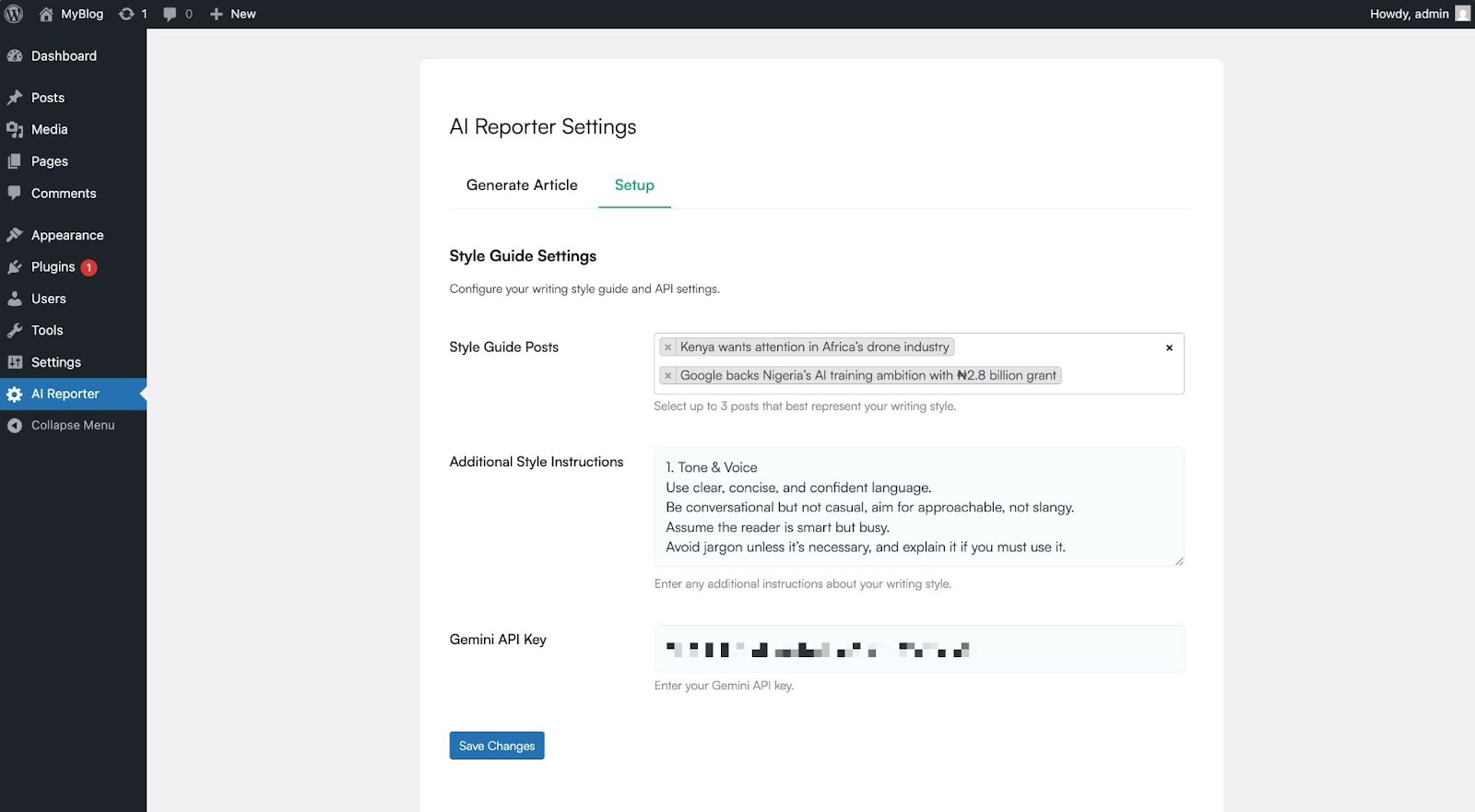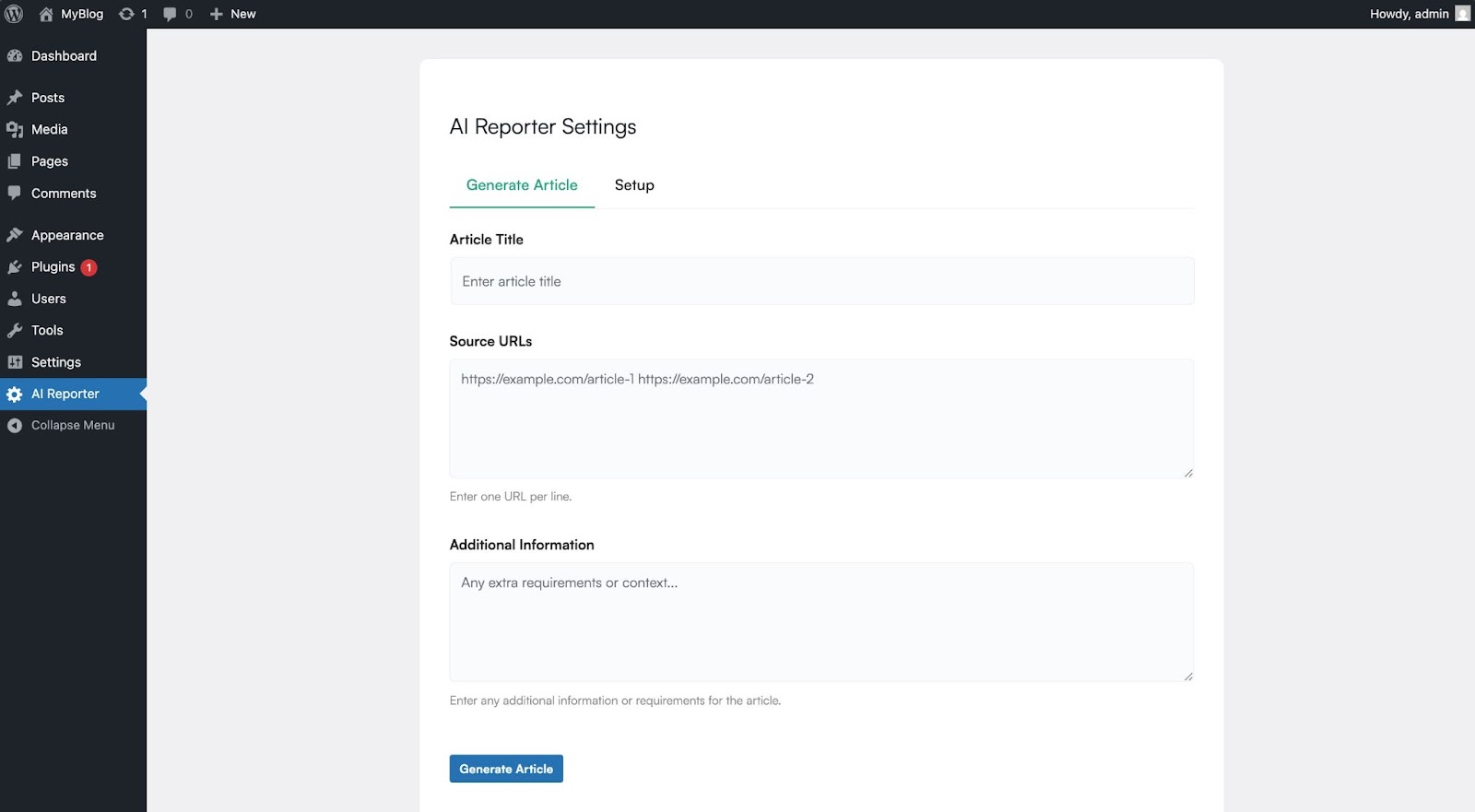For any writer, the enemy is a familiar one: a blinking cursor on a stark white page. It’s a silent, digital taunt. The challenge isn’t just writing; it’s pulling together scattered sources, half-formed ideas, and vague intentions into a coherent first draft.
But what if an assistant could take care of that heavy lifting, one that already understands your voice, your style, and your audience?
This isn’t just a hypothetical idea; it’s the reality being built by Joel Olawanle and Elijah Asaolu, two Nigerian software engineers who’ve written over 500 technical articles between them. They know this struggle better than most. Drawing on their shared experience, they created AI Reporter, a WordPress plugin built with a single mission: to eliminate the blank page and help writers get into flow faster. The Plugin was built in collaboration with Condia, leveraging the publication’s years of writing and publishing insightful tech news.
“Starting to write is sort of like the hardest part,” Olawanle explains during a call with Condia. “Imagine having a tool that can help you start.”
This isn’t just another generic AI wrapper. Olawanle and Asaolu’s solution is born from a deep, practical understanding of a writer’s workflow. They aren’t outsiders looking in; they’ve been in the trenches, churning out technical guides and tutorials for some of the biggest names in tech, including freeCodeCamp, Logrocket, Hackmamba, and Kinsta. They know that for a publication, voice is everything.
“AI and large language models are powerful,” Asaolu adds, “but they also hallucinate.”
So they built for precision. Instead of typing a vague prompt, a writer feeds AI Reporter three things: the source URLs for the story, the publication’s official style guide, and even links to a few previously published articles to use as a tonal benchmark.

“Behind the scenes, it visits all the URLs you gave it,” Asaolu explains. “It pulls in content and context, then generates a strong first draft. From there, you, as the author, can refine and publish.”
The difference, Olawanle says, is data.
“Tools like ChatGPT aren’t trained on your own data. That makes consistency hard and hallucinations more likely. Our tool changes that. It helps you maintain voice and avoid the usual AI pitfalls.”
The result isn’t a polished final article, but something more valuable: a well-structured, fact-grounded, voice-aligned first draft — freeing the writer to focus on what only a human can do: analysis, nuance, and narrative depth.

Writing code on paper
The journey behind this tool is as compelling as the problem it solves. Olawanle and Asaolu’s partnership began at Olusegun Agagu University of Science and Technology, bonded by a love for code. The early days were scrappy.
“We didn’t have laptops,” Olawanle says. “We wrote code in notebooks. At home, we’d write. At school, we’d run it live and fix bugs.”
That grit became a habit. During the 2020 lockdown, they began publishing everything they learned — long-form technical articles shared with the developer community. At first, it was just for fun. Then came the lightbulb moment.
“We saw a tweet in late 2020 saying technical writing could get you paid gigs. That’s when we realised — wait, what we’ve been doing is actually a career.”
It was a lightbulb moment. They leaned in, and their careers took off. Over the years, Asaolu has won technical writing hackathons and contracted for multiple Fortune 1000 SaaS companies to create technical articles and documentation. A computer science graduate, he now works as a software engineer at Paga while continuing to write technical content professionally. Olawanle’s journey saw him become a full-time staff member at freeCodeCamp, one of the world’s largest learn-to-code platforms, after its founder, Quincy Larson, reached out to him on Twitter. He’s written over 300 articles and even created paid courses for developer education platforms.
Their success, though, is about more than personal growth. It’s rooted in community. Olawanle still recalls a certificate generator he built years ago. A Nigerian entrepreneur used it to launch an online e-invite business. Asaolu also mentioned an open-source Next.js boilerplate he created, which is still being used and adapted by developers today.
A tool for the community
It’s no surprise, then, that their plan for the AI Reporter isn’t to chase venture capital or lock it behind a steep paywall. It’s a passion project—or as Asaolu calls it, a “side-side-side project”—driven by a desire to contribute.
“The idea is we’ll make it open-source,” Olawanle says. “We’ll push it as an official WordPress plugin and watch to see how people will use it.
The goal is to foster a community around the tool, where other developers can contribute, suggest improvements, and adapt it to their needs. Their ambition isn’t measured in revenue, but in adoption and impact.
Part of that vision includes language inclusion. They considered Nigeria’s multilingual media environment, where outlets publish in Hausa, Yoruba, and Igbo.
“We thought about platforms like BBC and others that publish news in Hausa, Yoruba, and Igbo,” Asaolu says. “One thing AI is really good at is translation, so it’d be great if more news platforms could generate translated stories effortlessly too.”
“For example, generating tech news in Yoruba or Hausa,” Olawanle adds, “that’s the picture we have. And honestly, it already works.”
Get passive updates on African tech & startups
View and choose the stories to interact with on our WhatsApp Channel
Explore




